The Tesla Powerwall 3 stands out with its remarkable 11.04 kW continuous AC output – more than double the power of earlier models. This advanced home battery system leads the UK market, with rapidly growing adoption since its mid-2024 launch. Users benefit from its substantial 13.5 kWh usable capacity and scalability up to 54 kWh per home on standard single-phase supplies, offering exceptional flexibility.
Many UK homeowners question whether the Powerwall 3 justifies its price tag as energy bills remain unpredictable. Priced from around £8,500 including installation – with potential savings of up to £850 (depending on your solar setup) – this robust storage system delivers much more than emergency backup. The system features three Maximum Power Point Trackers to boost solar capture efficiency, and maintains 89–90% round-trip efficiency to preserve most of your stored energy. Battery storage adoption is increasing, though claims such as 45% of new solar installations including batteries are indicative rather than exact.
This guide covers everything UK homeowners need to know about the Tesla Powerwall 3 in 2025, including technical details, practical advantages, and real-life applications.
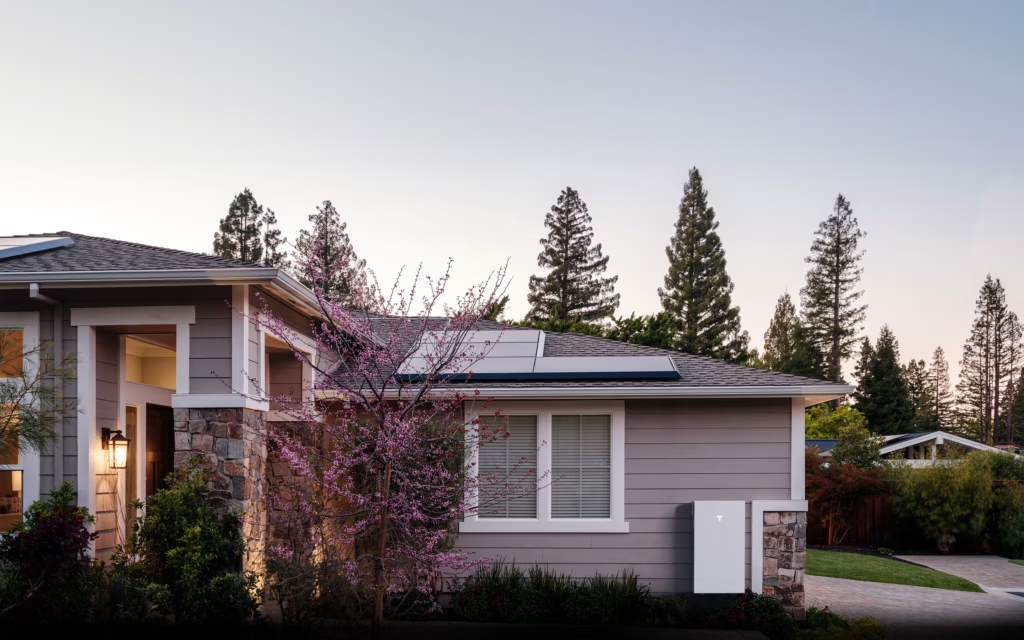
Why UK Homeowners are Choosing Tesla Powerwall 3
With over 750,000 Powerwalls installed worldwide as of late 2024, UK homeowners increasingly select the Powerwall 3 for more than just backup power.
Energy Independence and Bill Savings
The Powerwall 3 acts as your home’s personal ‘power bank’, reducing reliance on the national grid. Tesla data shows UK customers save roughly £1,450 each year, with many households reporting energy bills falling by nearly 30%. The system stores surplus solar energy for use after dark and, for those on time-based tariffs, charges when electricity rates are lowest and discharges during expensive peak hours.
Seamless Solar Panel Integration
With an integrated hybrid inverter, the Tesla Powerwall 3 connects directly to your solar panels and supports arrays up to 20 kW DC per unit. Its flexibility allows it to work with both new and existing solar installations. With 89–90% round-trip efficiency and solar-to-home efficiency around 97%, it outperforms many alternatives.
Eco-Friendly and Sustainable Living
Pairing solar panels with the Powerwall 3 can reduce grid reliance by up to 70%, significantly shrinking your carbon footprint. A typical system installation can offset carbon equivalent to taking approximately 2.2 cars off the road each year (indicative figure). The Powerwall 3 uses Lithium Ferro Phosphate (LFP) chemistry, known for its sustainability and superior performance. Some systems have cut overall grid energy usage by 71%, contributing to the UK’s transition to renewable energy.
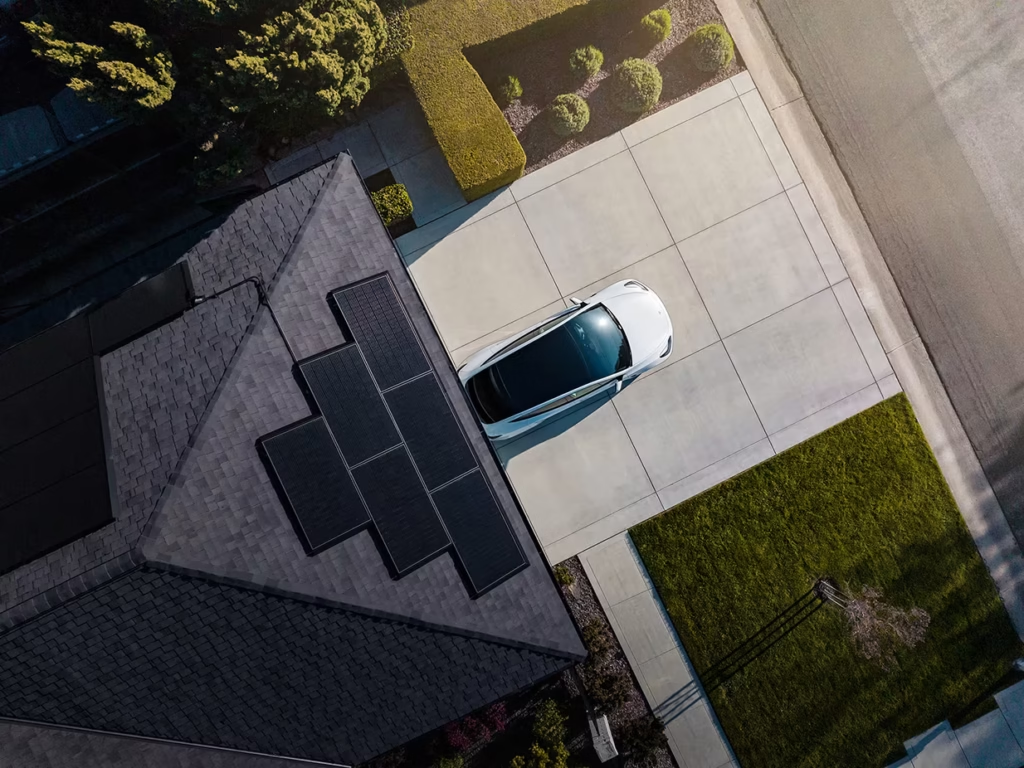
How Powerwall 3 Protects Your Home
The Powerwall 3 serves as a reliable guardian, providing automatic backup during outages. Its Gateway or Backup Switch detects grid failures and switches your home to battery power seamlessly – most households won’t even notice the transition.
Customisable Backup Reserve settings let you decide how much energy to keep aside for emergencies. For example, a 30% reserve (about 4.05 kWh) can power a typical home for 3 – 4 hours. The Storm Watch feature automatically charges your battery to full capacity when severe weather is forecast, ensuring you’re prepared.
With 11.04 kW of continuous power output, a single Powerwall 3 can run essential appliances like refrigerators, lighting, and even air conditioning. For longer outages, pairing with solar panels allows recharging during daylight. You can also focus the system on critical circuits to maximise backup duration.
Smart Features and User Experience
The Powerwall 3 combines powerful hardware with advanced software. The Tesla app offers a single platform to monitor and manage your system, displaying battery status, energy generation, and usage in real time. It provides insights into consumption patterns, historical data, and sends notifications during important system events.
Customisable settings include:
- Backup Reserve (for outages)
- Time-Based Control (for off-peak charging)
- Grid Charging and Energy Export options
These features help you optimise savings and energy use, especially if you’re on a time-of-use tariff.
Is Tesla Powerwall 3 Worth the Investment?
Most UK households will consider the £8,500 to £11,000 installed price a substantial investment. However, the potential for significant bill reductions, energy independence, and backup security makes it attractive for many.
Impact on Property Value
While it may not increase your home’s value as much as a kitchen renovation, a Powerwall 3 adds appeal for environmentally aware and tech-focused buyers. Homes with solar battery systems often command premium prices, with some surveys suggesting buyers would pay up to £7,941 extra for solar-equipped properties.
Tesla’s Reputation and Warranty
The Powerwall 3 comes with a 10-year warranty (unlimited cycles, at least 80% capacity retention). Reliable internet connectivity is essential for firmware updates – without it, the warranty could reduce to four years.

Who Should Consider Powerwall 3 in 2025?
The Powerwall 3 is ideal for:
- Homes with or planning solar panels
- Customers on time-of-use energy tariffs
- Families concerned about power cuts
- Those committed to reducing their environmental impact
With the potential to reduce energy bills by 30% or more, your investment could pay for itself over time, especially as energy costs rise.
Conclusion
The Tesla Powerwall 3 represents a major step forward in home energy storage for UK homeowners. With its 11.04 kW output and 13.5 kWh capacity, it offers real energy independence and can cut electricity bills by approximately £1,450 a year. Integration with both new and existing solar setups is seamless, and the system’s automatic backup features and user-friendly app provide peace of mind and full control.
The upfront cost is significant, but long-term financial rewards and added property value are clear, especially for environmentally conscious buyers. The Powerwall 3 is especially valuable for homes with solar panels, those concerned about grid stability, or anyone looking to reduce their environmental impact.
At its core, the Tesla Powerwall 3 delivers more than energy storage – it offers a path to greater self-sufficiency, lower utility costs, and a more sustainable home.
Why Choose Glo to Install Your Tesla Powerwall 3?
Choosing the right installer is as important as selecting the battery itself. Glo Renewables is a leading local expert in Devon and the surrounding areas, with a proven track record and a strong reputation for quality. Based in Totnes, Glo Renewables is trusted by both homeowners and businesses seeking reliable solar energy solutions.
With 73 five-star Google reviews, Glo Renewables demonstrates consistent commitment to customer service, technical excellence, and aftercare. Their highly trained professionals tailor each installation to your property and needs, providing clear advice and ongoing support.
Glo Renewables doesn’t just install your Powerwall 3 – they help you maximise its benefits. Their expertise in solar panel integration, battery storage, and smart home energy management ensures a seamless, future-proof solution that delivers real savings and sustainability.
Frequently Asked Questions about Tesla Powerwall 3
Is the Tesla Powerwall 3 a worthwhile investment for UK homeowners?
The Powerwall 3 can be a valuable investment for many UK homeowners. It offers consistent backup power, reduces grid reliance, and can lead to significant savings on electricity bills. With potential annual savings of £1,450 and the ability to lower energy bills by up to 30%, the initial cost can be offset over time.
What are the main advantages of the Tesla Powerwall 3?
Key advantages include seamless integration with solar panels, automatic backup during power outages, customisable energy settings, and remote monitoring via the Tesla app. It also contributes to a reduced carbon footprint and increased energy independence for homeowners.
Can a single Tesla Powerwall 3 power an entire house?
A single Powerwall 3, with its 11.04 kW continuous output and 13.5 kWh capacity, can power most essential household appliances during an outage. However, the exact duration depends on energy consumption patterns. For complete energy independence or homes with high power demands, multiple units may be necessary.
What is the expected lifespan of the Tesla Powerwall 3?
Tesla provides a 10-year warranty for the Powerwall 3, guaranteeing at least 80% capacity retention after a decade of use. The warranty covers unlimited battery cycles, allowing frequent use without affecting the terms. However, maintaining internet connectivity for firmware updates is crucial to preserve the full warranty period.
Are there any drawbacks to consider when installing a Powerwall 3?
While the Powerwall 3 offers numerous benefits, potential drawbacks include a significant initial investment cost, limited sizing options compared to some competitors, and potential difficulties in pairing with existing solar systems. Additionally, some users have reported concerns about Tesla’s customer service reputation.
How much solar power do I need to charge a Tesla Powerwall 3 effectively?
The Powerwall 3 is compatible with solar arrays up to 20 kW DC per unit, but most UK homes operate systems between 4–10 kW. A well-sized solar panel system matched to your household’s energy usage will ensure you’re generating enough solar power to charge the Powerwall fully, especially during peak sun hours.
What does 13.5 kWh of storage mean for everyday use?
The 13.5 kWh usable capacity refers to how much energy your Powerwall can store and discharge. For context, this could power a fridge, lights, WiFi, and basic appliances for around 12–24 hours depending on your usage. It’s enough to cover most evening and overnight needs, particularly when combined with solar input during the day.
What happens to surplus energy my solar panels generate?
Any surplus energy not used in the home is stored in your Powerwall 3 first. Once your battery is full, excess solar can be exported back to the grid, potentially earning you money through export tariffs or offsetting future energy costs.
Can the Tesla Powerwall 3 be installed outdoors?
Yes, the Powerwall 3 is designed for both indoor and outdoor installation. It is weather-resistant and built to withstand the UK climate, but professional installation by experts like Glo Renewables ensures it’s placed in an optimal location for longevity and performance.
How does the Powerwall 3 help during off-peak times?
Thanks to its smart Time-Based Control feature, the Powerwall 3 can charge during off-peak times when electricity is cheaper (e.g. overnight on an Octopus Energy Go or Agile tariff), and then discharge during peak hours—maximising your savings.
What should I consider to make an informed decision about battery storage?
Look at your current energy usage, solar panel capacity, available export tariffs, and your electricity provider’s pricing model. Also consider your goals: are you seeking energy independence, backup during outages, or maximising financial return? A qualified installer like Glo can help analyse your setup and provide tailored recommendations.
How does Powerwall 3 handle excess solar energy on bright days?
On sunny days, any excess solar energy that your home doesn’t consume is prioritised for battery charging. Once the Powerwall is fully charged, any remaining energy can be sent back to the grid or used for high-load appliances like EV charging.
Can I use Tesla Powerwall 3 with Octopus Energy?
Yes. Many UK customers pair the Powerwall 3 with Octopus Energy’s smart tariffs, such as Agile or Intelligent Octopus. This allows you to optimise savings by charging during cheap off-peak hours and using stored energy when grid prices spike.
Is green energy usage tracked in the Tesla app?
Absolutely. The Tesla app clearly shows how much of your home’s power comes from solar, battery, and the grid. You’ll see when your system uses green energy, stores excess, or exports to the grid, helping you track and reduce your carbon footprint over time.
Can I expand my storage capacity later?
Yes, the Powerwall 3 is scalable. You can install multiple units—up to four per home on standard single-phase UK supplies—giving you up to 54 kWh of total energy storage if your needs grow or you expand your solar input in future.
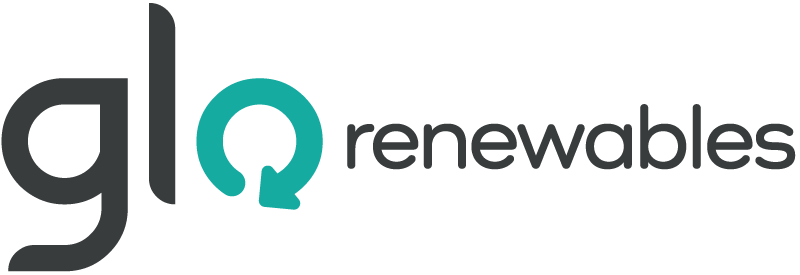
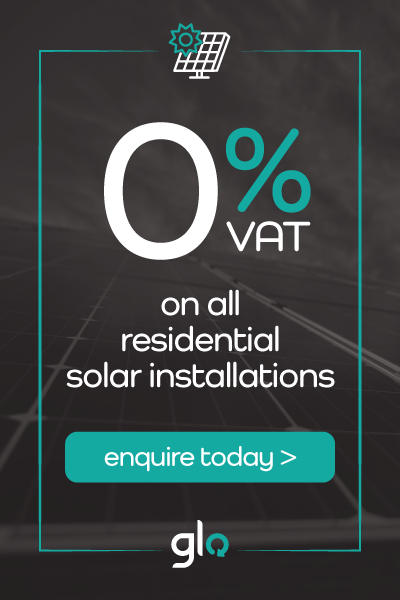

![Why Solar Panels for Farms In Devon Are Better Than Traditional Energy [2025 Guide]](https://glo-renewables.co.uk/storage/2025/08/Why-Solar-Panels-for-Farms-In-Devon-Are-Better-Than-Traditional-Energy-2025-Guide.jpg)


